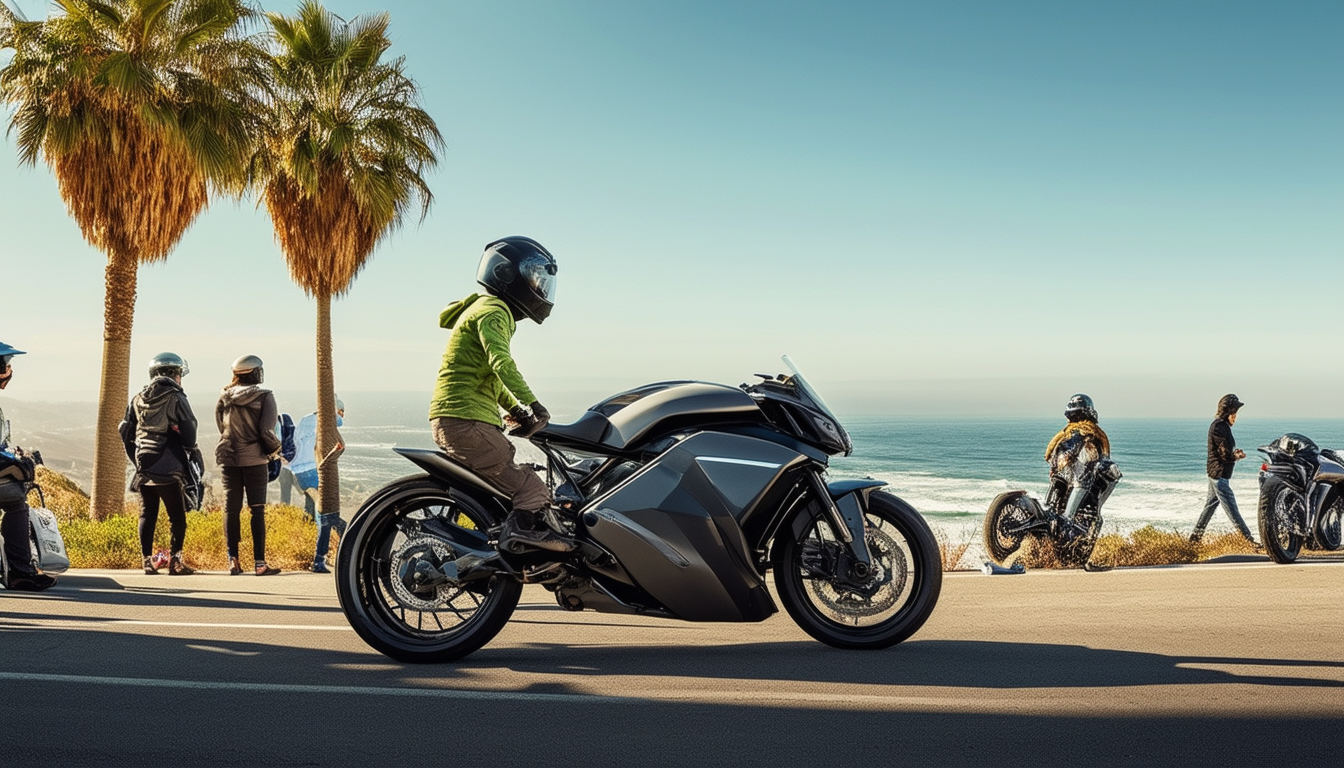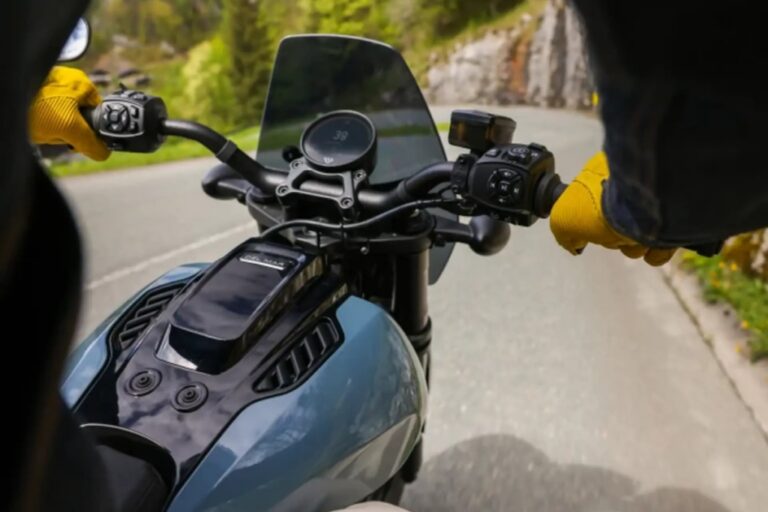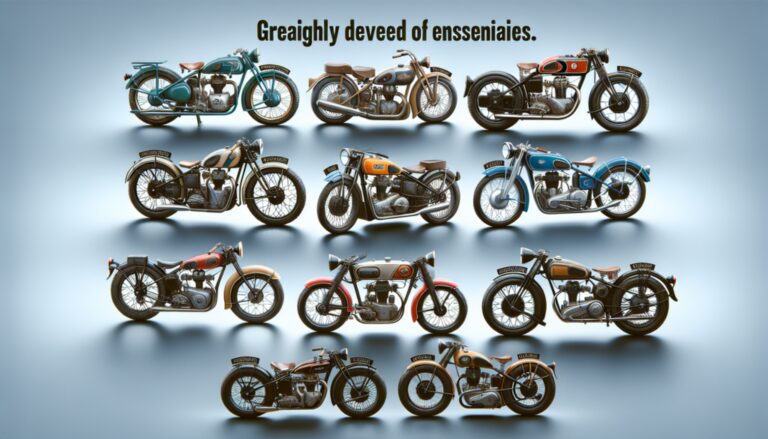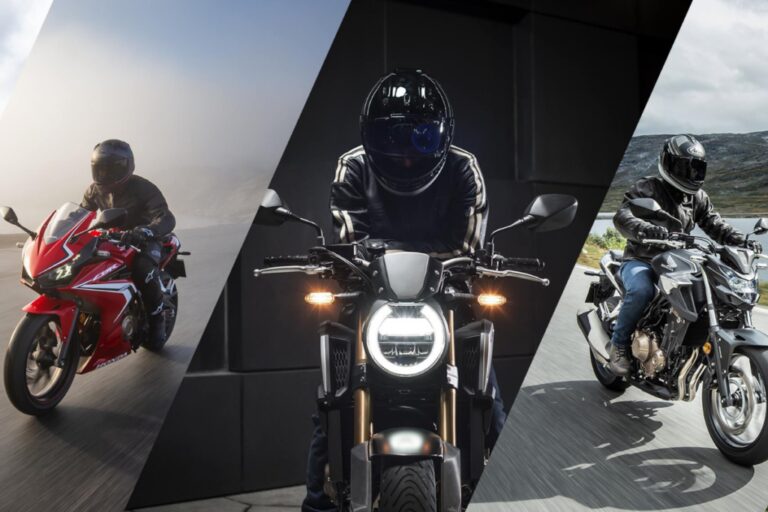California Leads the Charge: An Ambitious Initiative to Boost Electric Motorcycle Sales

California is taking monumental steps in environmental legislation, aiming to revolutionize the motorcycle market by pushing for an ambitious increase in electric motorcycle sales. In a groundbreaking initiative, the state plans to implement regulations that will require zero-emission motorcycles to comprise a significant percentage of sales by 2028 and beyond. As the home of numerous moto-enthusiasts, California’s approach not only seeks to reduce air pollution but also aims to reshape how riders view electric options on the road.
In a groundbreaking move towards sustainability, California is set to implement new regulations aimed at significantly increasing the sales of electric motorcycles. This initiative marks a pivotal step in the state’s ongoing efforts to combat air pollution and reduce greenhouse gas emissions. By mandating that a certain percentage of motorcycle sales be zero-emissions in the coming years, California is not only leading the charge for electric vehicles but also promoting a cleaner and greener environment for future generations.
A New Era for Motorcycling in California
Historically, California has been a stronghold for gasoline-powered motorcycles, prized for their power and long-range capabilities. However, as the state faces increasing challenges with air quality and climate change, it is evolving to embrace a new era of electric motorcycles. The latest regulations from the state’s Air Resources Board aim for 10% of all motorcycles sold to be zero-emission by 2028, eventually escalating to 50% by 2035. This ambitious target highlights the importance of transitioning away from traditional gas-powered bikes.
Strategies for Implementation
To realize this vision, California’s approach includes a comprehensive credit system for manufacturers. This means that companies will earn credits towards their sales targets based on the zero-emissions motorcycles they produce. As large battery electric motorcycles typically emit the most pollution, they will earn greater credits, while lower-speed models will gain fewer. This system encourages manufacturers to innovate and invest in electric motorcycle technology while ensuring compliance with the evolving standards.
Environmental and Economic Benefits
The environmental implications of this initiative are profound. By 2045, the regulations could lead to the sale of over 280,000 new electric or hydrogen motorcycles, a significant increase compared to current sales figures. This shift is expected to eliminate approximately 20,000 tons of pollutants and foster substantial health benefits, potentially saving the state $649 million in reduced mortality and healthcare costs associated with motorcycle emissions.
Challenges to Overcome
Despite these promising changes, numerous challenges remain. Many motorcyclists express concerns regarding the insufficient public charging infrastructure and the limitations of electric motorcycle ranges. Current electric models typically offer a maximum range of about 100 miles, which may not suit those who enjoy long-distance rides or off-road adventures typically associated with motorcycles. Riders emphasize the need for more robust charging stations to alleviate these anxieties as the market for electric motorcycles expands.
The Push for Infrastructure Development
To see the full potential of electric motorcycles, California’s officials recognize the need for an expanded network of charging stations. Comparatively, the situation must improve to accommodate the needs of electric motorcycles, especially for riders who may live in urban areas or apartments where charging convenience is essential. Without appropriate infrastructure, enthusiasm for electric alternatives may dwindle.
Rider Perspectives on Electric Motorcycles
Responses from the motorcycling community reflect a mixture of optimism and skepticism. Many enthusiasts see parallels between the evolution of automotive technology and the potential of electric motorcycles. As young riders enter the market, their preferences for environmental sustainability may increase demand for electric models. Conversely, long-time riders often prefer the performance and sound associated with traditional gas-powered machines, citing safety and range as critical factors that electric models currently do not meet.
Industry Response and Adaptation
Several manufacturers are beginning to adapt to the shifting landscape, with brands like Harley Davidson and Ducati already offering electric models. However, some traditional motorcycle enthusiasts remain hesitant, viewing electric bikes as a niche segment rather than a mainstream option. This highlights the need for the industry to educate consumers on the viability and benefits of electric motorcycles.
Conclusion}
The future of motorcycling in California is rapidly changing as it embraces the electric wave. With ambitious regulations aimed at increasing electric motorcycle sales and reducing emissions, California is laying a foundation for a cleaner, more sustainable approach to riding. While challenges remain, the state’s proactive measures signal a promising shift towards a cleaner transportation future.
California is set to revolutionize the electric motorcycle landscape with an innovative plan aimed at increasing the sales of zero-emission motorcycles. By implementing regulations that require manufacturers to significantly raise their output of electric bikes, the state is not only addressing air pollution but is also embracing a more sustainable future for motorcycling.
Understanding the New Regulations
The California Air Resources Board has proposed new regulations that will require 10% of all motorcycles sold to be zero-emission by 2028 and 50% by 2035. This ambitious plan is designed to reduce pollution levels and promote cleaner alternatives for bikers. It is vital for all stakeholders to stay informed about these upcoming regulations and adjust their strategies accordingly.
The Importance of Infrastructure Development
While the initiative is commendable, the lack of adequate charging infrastructure poses a significant challenge. Motorcyclists and manufacturers must advocate for the development of more charging stations throughout California. Increasing the availability of charging options will help ease the transition for bikers who are hesitant about switching from traditional gas-powered motorcycles. Ensuring that charging capabilities are strategically located along popular routes could encourage adoption.
Benefits of Electric Motorcycles
Switching to electric motorcycles comes with several benefits, such as lower fueling costs and reduced maintenance requirements. Electric motorcycles can often be charged at home overnight, allowing for convenient, ready-to-go rides in the morning. Encouraging potential buyers to explore the financial savings associated with owning an electric motorcycle can help in changing perceptions about their worth.
Marketing Strategies for the New Era
For manufacturers and dealerships, it is crucial to adapt marketing strategies to emphasize the benefits of electric motorcycles. Highlighting features like environmental impact, lower operational costs, and unique riding experiences can capture the interest of both seasoned riders and newcomers. Building partnerships with environmental organizations and participating in motorcycle events can also elevate awareness about electric motorcycles.
Adapting to Consumer Concerns
Many potential buyers express skepticism regarding the range and performance of electric motorcycles. Addressing these concerns openly and providing real-world examples of electric motorcycle capabilities can foster greater trust among consumers. Manufacturers should focus on developing models with longer ranges, appealing to those who value both performance and sustainability.
Engaging the Motorcycle Community
Engaging with the motorcycle community through social media, clubs, and events can create a supportive environment for the adoption of electric motorcycles. By hosting test rides, workshops, and informational sessions, enthusiasts can experience the advantages of electric options firsthand. Strong community involvement can enhance the acceptance of this shift within the culture of motorcycling.






